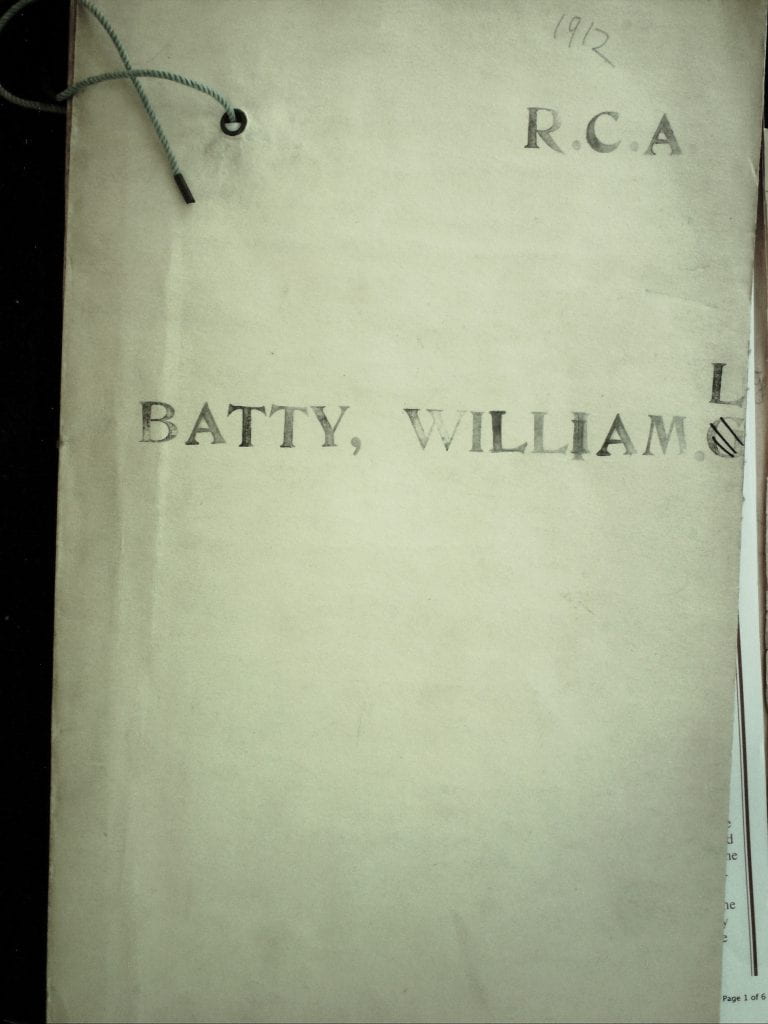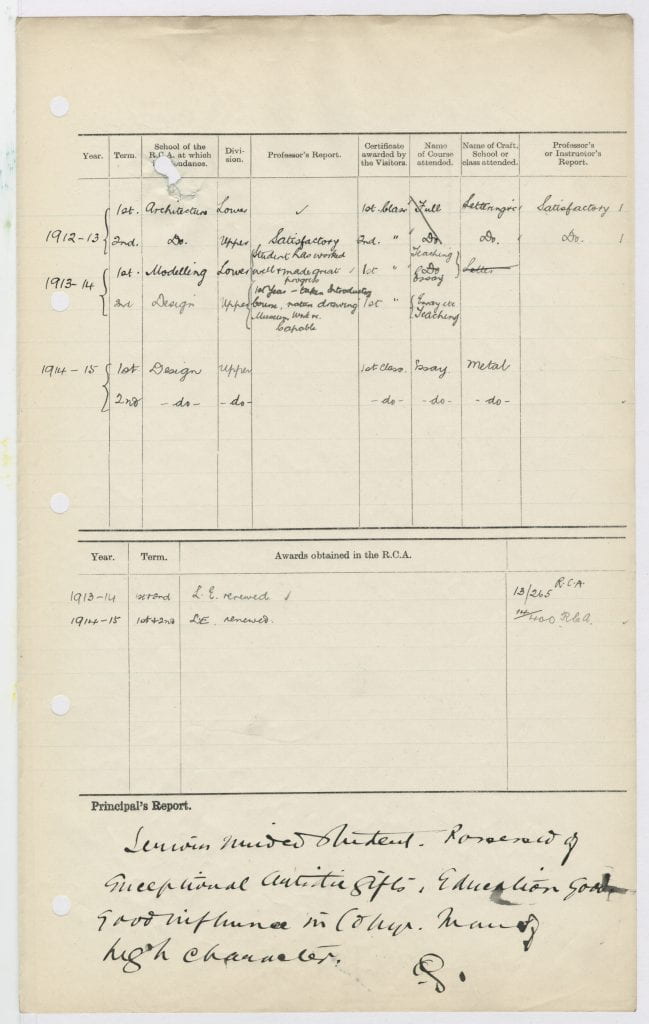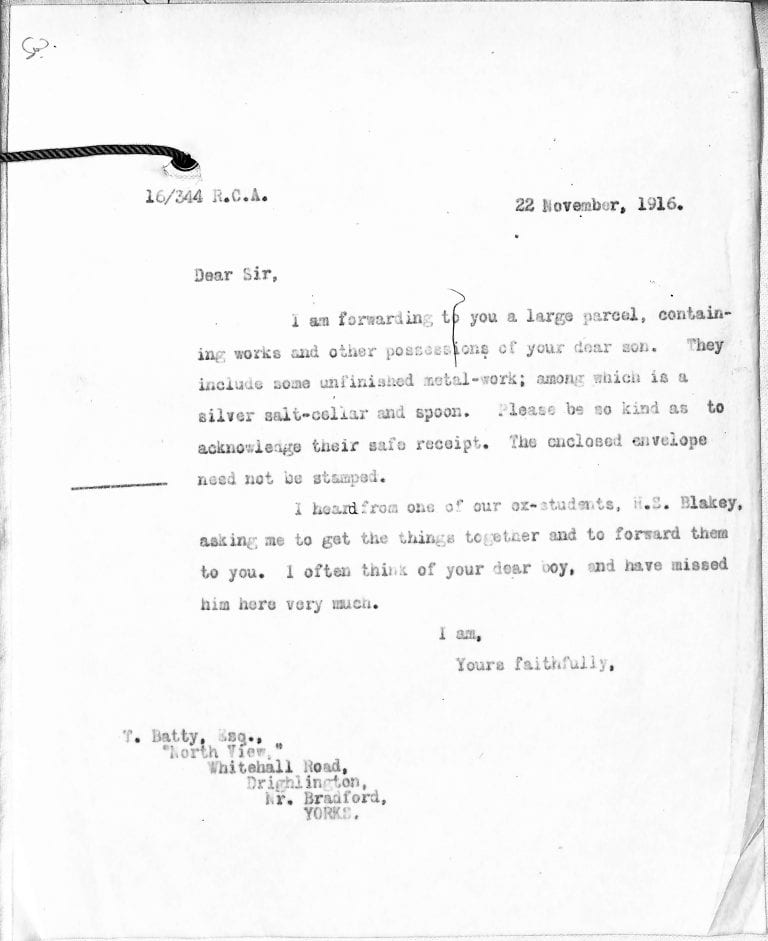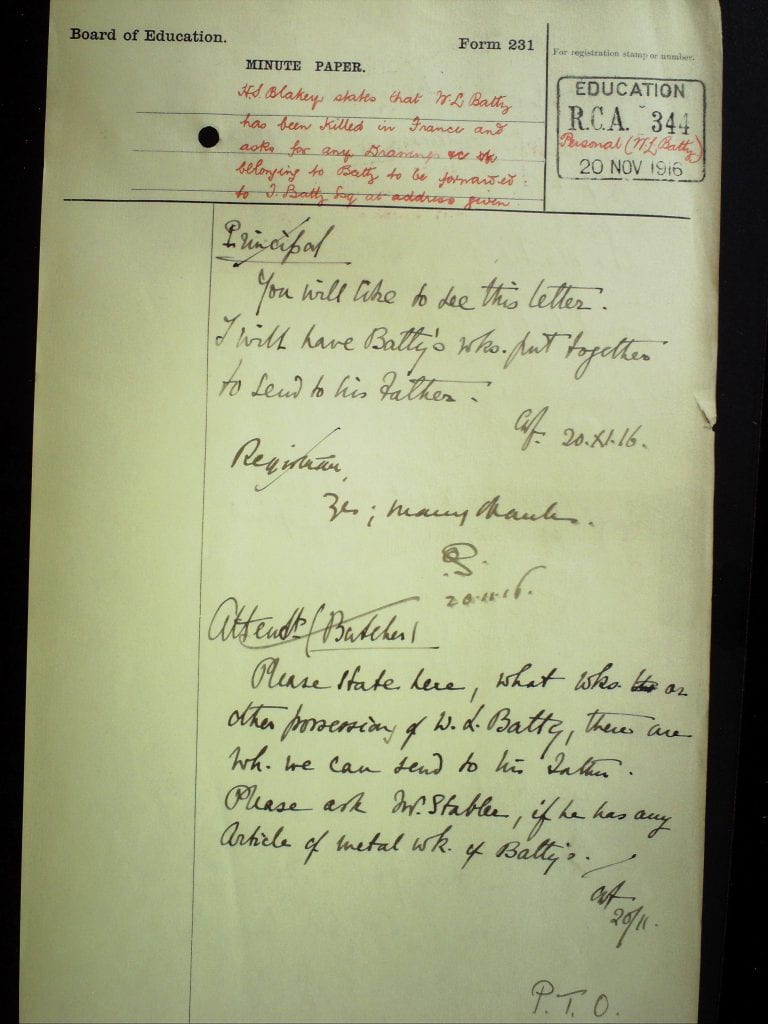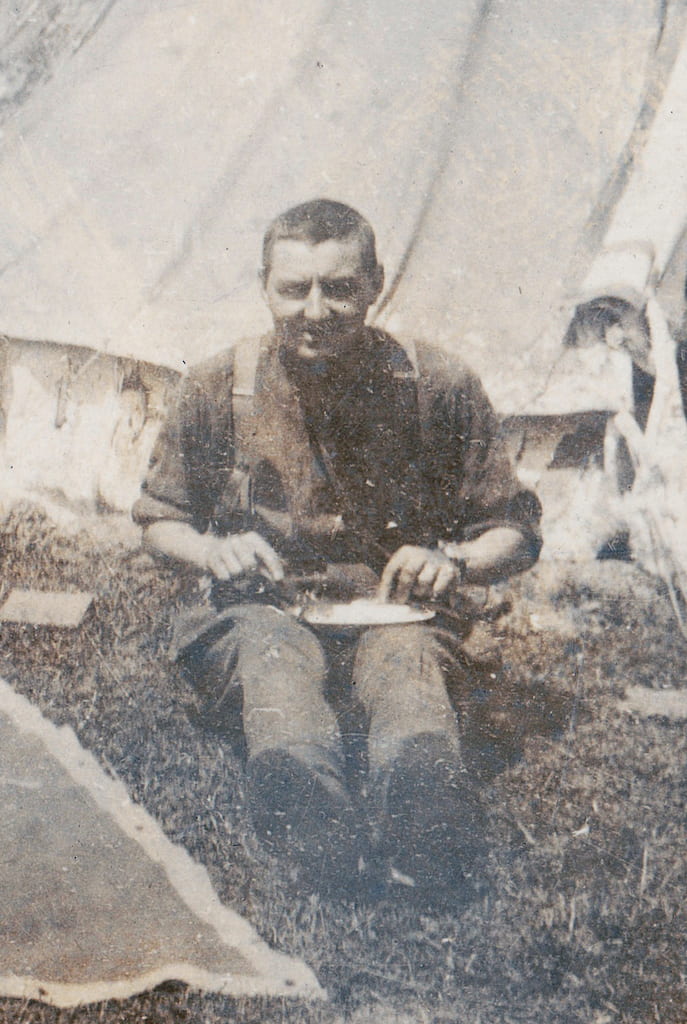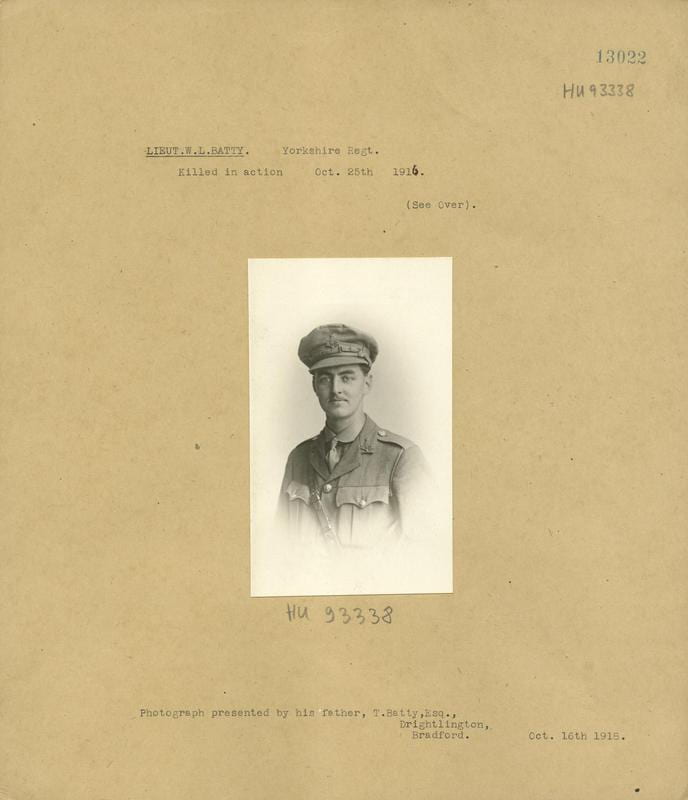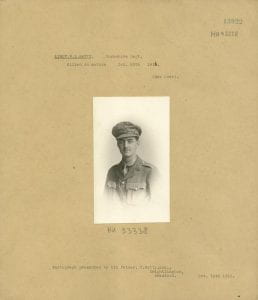
Born 9 March 1892
Died 25 October 1916
Studied at the RCA: October 1912 – May 1915
William was brought up in Drighlington, Bradford. He was one of two children born to a house painter and decorator, Tom Batty, and his wife, Sarah. Before arriving at the RCA, William had attended the local art school following a period working, probably alongside his father. The award of a local scholarship allowed him to continue his studies in London, most likely with the hope of becoming an art master. His progress and ability are clear from his College student file that notes ‘his exceptional artistic gifts’ and ‘high character’.
In October 1914 William, together with several other students, joined the London University Officer Training Corps, eventually leaving the College on 17 May 1915 to start his cadet training at Rugeley Camp in Staffordshire. He gained his commission to Second Lieutenant in July 1915 and embarked for France in October. It is possible that he joined the 1/4th Battalion, Alexandra, the Princess of Wales’s Own (Yorkshire Regiment) – later known as the Green Howards – in one of at least two drafts of reinforcements noted in their war diary for that month. At the time the battalion, part of the 50th (Northumbrian) Division, was involved in operations near Armentières and then Merris. This kind of fighting – attritional trench warfare – came to characterise much of the western front over the winter months, as battalions appear to move many times, capturing and loosing ground, but all within relatively short distances. The war diary for the 1/4ths records not only military operations but also – and as significantly – the sheer physical hardship for the soldiers as bouts of fighting gave way to periods of exhausting labour needed to repair damaged trenches, dugouts and roads.
William’s promotion to Lieutenant on 3 March 1916 was published in the London Gazette, with the battalion war diary mentioning his ‘rejoining’ them – presumably from training or leave – at billets near Poperinghe, Belgium, a week later. Only one other specific reference has been found to him in the late spring: in the lead up to the Battle of the Somme William is named as taking part in a raid on 12 June probably between the villages of Loker (then Locre) and Kemmelberg. No details of this operation have been found. Instead, throughout the summer months, the battalion war diary records a shocking lack of preparations by the military authorities for the well being of the soldiers. By the middle of August, when not fighting or training, the battalion, then stationed west of Albert, endured lack of basic supplies and succumbed to illness due to insanitary camp conditions. This poor organisational planning seems to have continued into September as the 1/4ths moved north, west of Martinpuich, readying for what became known as the Battle of Flers-Courcelette: the very first action that deployed the British Army’s new invention – the tank.
By early October the battalion had moved back towards Albert, with the officers wounded during operations in the previous weeks listed in their war diary. One of these was William. Recently promoted to Acting Captain he had become a casualty, according to later reports, during fighting at Eaucourt de l’Abbaye, north west of Martinpuich. It seems he may not have completely recovered when he, and other injured soldiers, came back from hospital to the battalion on 6 October: the commanding officer in frank war diary entries records his outrage at the premature return of such ‘absolutely’ unfit men. Towards the end the month the 1/4ths moved to a camp near Mametz Wood to relieve another battalion.
It is not entirely clear what happened on the night of 24/25 October with the war diary stating simply that ‘The whole relief was very hurried…’. The entry implies, and a later memorial roll states, that William was killed moving up with his men, presumably, once more to trenches west of Martinpuich – known as Prue Trench and Starfish Line – while a later account refers to William and another officer, John Burgoyne Hudson (a New Zealander), being killed by a shell while undertaking reconnaissance further north, near the Butte de Warlencourt: a prominent chalk outcrop that had become the focus of many attempts at capture. Although William’s father was advised that a record was made of where William and John were buried at the time of their deaths, their bodies were never recovered. Presumably the constant churning of land made this impossible.
Another serving student, Horace S. Blakey – a friend of William’s from his Bradford days – wrote to the College at the request of William’s parents to ask for their son’s ‘property & works’. In response, apart from arranging the return of many pieces, the Registrar wrote a restrained but poignant letter to the family. ‘Bill’s’ older sister, Elsie, wrote back including a photograph of her brother. This could be a copy of the one now held at the IWM reproduced here.
William is commemorated on the Thiepval Memorial, France.
